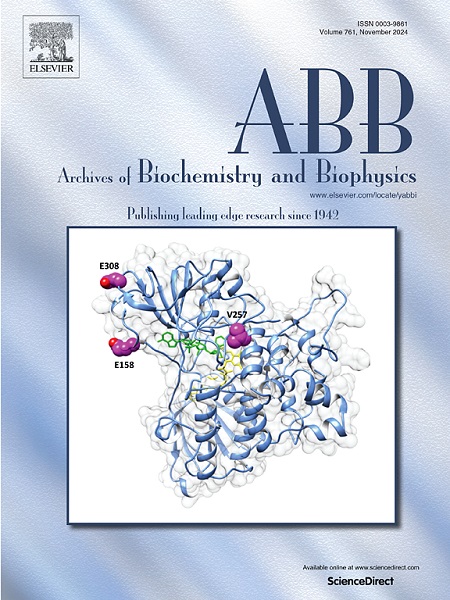在甲状腺乳头状癌中,小檗碱通过PI3K/Akt通路和Nrf2诱导ROS触发细胞凋亡。
IF 3.8
3区 生物学
Q2 BIOCHEMISTRY & MOLECULAR BIOLOGY
引用次数: 0
摘要
背景:Nrf2在乳头状甲状腺癌(PTC)中高表达,并与不良预后相关。研究表明,小檗碱(Berberine, BBR)可以降低Nrf2水平,引发癌细胞凋亡。然而,其在PTC中抗癌作用的确切分子机制尚不完全清楚。方法:采用MTT法和流式细胞术观察BBR对细胞凋亡的影响。为了评估BBR的体内抗肿瘤效果,采用异种移植模型。应用分子和生物化学方法,阐明BBR在PTC中发挥抗癌作用的机制。结果:BBR能有效抑制PTC细胞生长,促进细胞程序性死亡。通过灌胃给予高剂量的BBR可显著减少异种移植物肿瘤的发展。在机制上,BBR抑制PI3K/Akt信号通路中nrf2依赖的通路,导致活性氧(ROS)的产生。结论:我们的研究结果表明,BBR可以通过ROS的产生抑制Nrf2和PI3K/Akt通路,从而靶向PTC。这表明BBR可能作为PTC治疗的潜在治疗剂。本文章由计算机程序翻译,如有差异,请以英文原文为准。
Berberine triggers apoptosis through the PI3K/Akt pathways and Nrf2 by inducing ROS in papillary thyroid cancer
Background
Nrf2 is highly expressed in papillary thyroid cancer (PTC) and is associated with negative outcomes. Research has indicated that Berberine (BBR) can lower Nrf2 levels and trigger apoptosis in cancer cells. However, the exact molecular mechanisms behind its anticancer effects in PTC are not fully understood.
Methods
The effects of BBR on cell apoptosis were assessed using the MTT assay and flow cytometry. To evaluate BBR's in vivo antitumor efficacy, a xenograft model was used. Molecular and biochemical methods were applied to clarify the mechanisms through which BBR exerts its anticancer effects in PTC.
Results
BBR has been shown to effectively inhibit the growth of PTC cells and promote programmed cell death. A higher dose of BBR administered via gavage significantly reduced the development of xenograft tumors. Mechanistically, BBR inhibits the Nrf2-dependent pathway of PI3K/Akt signaling pathway, resulting in the production of reactive oxygen species (ROS).
Conclusions
Our results suggest indicate that BBR can target PTC by inhibiting the Nrf2 and PI3K/Akt pathways through ROS generation. This indicats that BBR may serve as a potential therapeutic agent for PTC treatment.
求助全文
通过发布文献求助,成功后即可免费获取论文全文。
去求助
来源期刊

Archives of biochemistry and biophysics
生物-生化与分子生物学
CiteScore
7.40
自引率
0.00%
发文量
245
审稿时长
26 days
期刊介绍:
Archives of Biochemistry and Biophysics publishes quality original articles and reviews in the developing areas of biochemistry and biophysics.
Research Areas Include:
• Enzyme and protein structure, function, regulation. Folding, turnover, and post-translational processing
• Biological oxidations, free radical reactions, redox signaling, oxygenases, P450 reactions
• Signal transduction, receptors, membrane transport, intracellular signals. Cellular and integrated metabolism.
 求助内容:
求助内容: 应助结果提醒方式:
应助结果提醒方式:


